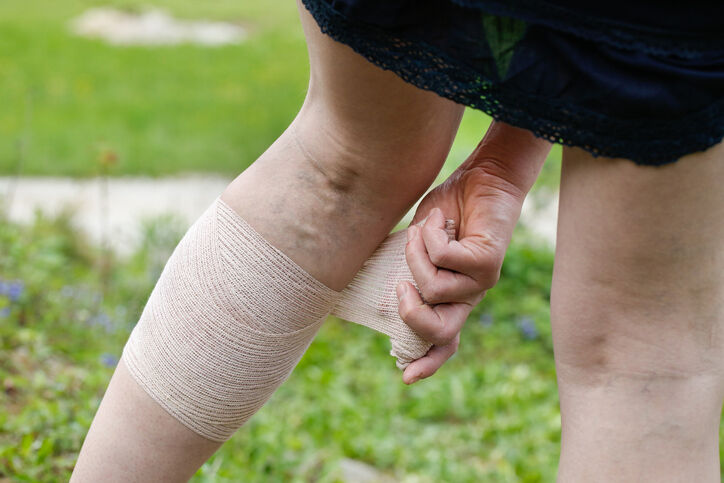
Can Venous Ulcers be Cured?
Venous ulcers on the ankle often result from poor circulation. But these open sores can be treated and cured. Learn more:

Do you find it hard to live with painful, swollen legs? Ask your doctor about these chronic venous insufficiency treatments.
Have you been diagnosed with chronic venous insufficiency (CVI)? You’re not alone! Varicose veins, a common symptom of CVI, affect more than 25 million adults in the U.S., with six million more having advanced vein disease, which includes blood clots and skin ulcers. Now that you understand what’s been causing the throbbing pain, swelling, and protruding veins in your legs, your next step is finding relief. Fortunately, there are many proven chronic venous treatments to ease your discomfort.
Your leg veins are lined with tiny valves that open and close tightly to push blood back to the heart. Due to age, genetics, obesity, gender, and a sedentary lifestyle that includes having a job where you must sit or stand for long periods, those valves may weaken. As a result, blood pools in the vein, causing symptoms of pain, swelling, cramping, and heaviness.
At-home conservative treatments can relieve those symptoms by improving circulation in the veins. Still, only a minimally invasive surgical procedure can eliminate CVI. Talk to your doctor about exploring the following seven treatment options:
Sclerotherapy. Sclerotherapy is typically recommended for spider and smaller varicose veins. A safe, saline-based solution is injected into the damaged vein, causing the vein walls to scar and collapse. Blood diverts to healthier veins, and the body eventually reabsorbs the diseased vein.
Thermal ablation. Thermal ablation refers to using laser heat or radiofrequency waves to destroy the swollen vein.
Ambulatory phlebectomy. The diseased vein is removed via two tiny incisions. Blood is then redirected to nearby healthy veins. You’ll walk away with just a Band-Aid.
VenaSeal. VenaSeal is a newer technique in vein care that involves sealing the affected vein with a proprietary medical adhesive.
ClariVein. During ClariVein, the doctor will insert a rotating tip into the affected vein via a mechanochemical ablation device. The tip will release a sclerosing agent to destroy the vein.
Compression stockings. A non-surgical treatment, compression stockings apply gentle pressure to the leg veins to keep the blood flowing.
Lifestyle changes. As mentioned earlier, self-care treatments can relieve the pain and swelling of CVI. Consider taking a daily walk or elevating your legs for as little as 20 minutes daily. Managing your weight with a vein-friendly diet and exercise can also take pressure off your veins.
Treatment can prevent more serious CVI complications, such as hard-to-heal venous ulcers and blood clots. If not immediately treated, a blood clot could cause a life-threatening pulmonary embolism if it lodges in the lungs. But it won’t get to that point if you consider treating chronic venous insufficiency now.
Now that you know all about the treatments for chronic venous insufficiency and varicose veins, why wait any longer? The board-certified physicians at Center for Vein Restoration (CVR) are highly qualified to develop a tailored treatment plan combining conservative and surgical methods to eliminate the pain of varicose veins and CVI and prevent further complications.
Contact your nearest CVR location today to schedule a consultation or speak to a representative. You may also schedule online at your convenience.